No one is immune to spills and stains. Whether you’re a busy parent with kids or a professional dealing with clients, you will have to deal with a stain at some point. And while some stains are easier to remove than others, there’s no need to panic – we’ve got you covered! In this article, we’ll walk you through the most common stains and how best to remove them.
Contents
Common Stains And How To Remove Them
It’s no secret that stains come in all shapes and sizes. But what’s important to remember is that no matter where they’re from, you can use a few simple tricks to remove them. So if you’ve spilled something on yourself or your clothes, don’t worry – you’ll be clean again soon! Here are the most common stains and how best to remove them:
Grass
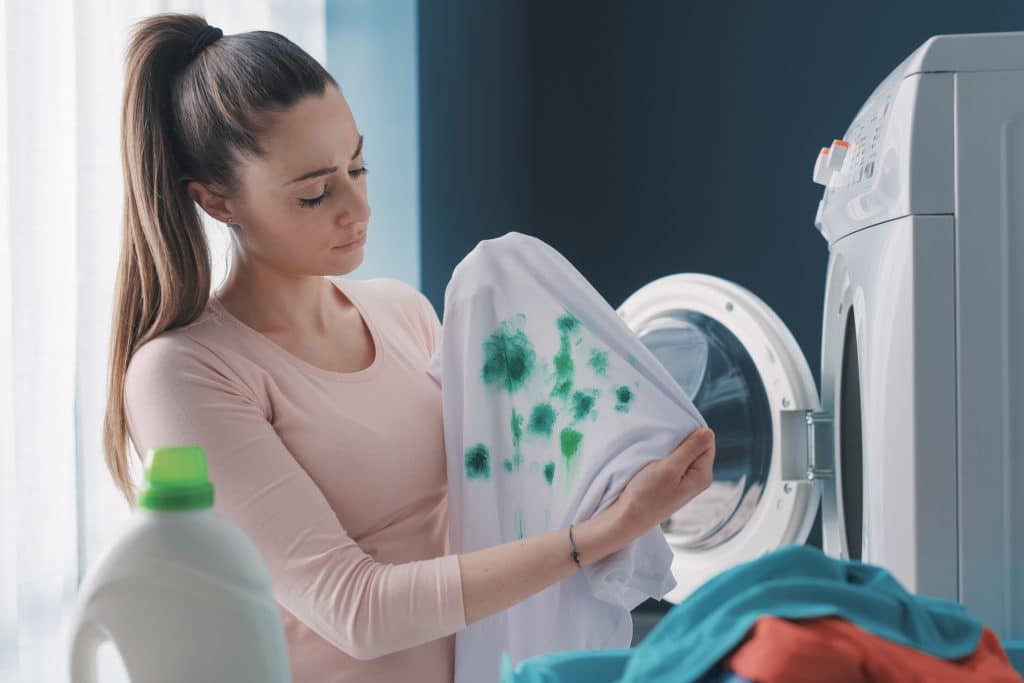
Grass stains might be the most difficult of all common stains to remove due to their complex composition. The best way to tackle a grass stain is to immediately flush it with cold water since heat will set the stain, making it much more stubborn. If that doesn’t work, you may need to enlist the help of a laundry detergent specifically designed for tough stains.
If all else fails, take your garment to the dry cleaner, they can often get even the toughest grass stains out! In a pinch, try mixing a solution of something acidic like white vinegar with mild detergent and rubbing it into the stain. Rinse with cold water again afterward and launder as normal.
Ketchup

Ketchup stains can seem ironic – a red product causing even redder stains on your clothing. But they don’t have to last forever! Start by blotting off any excess tomato sauce with some paper towel or a clean cloth, and then flush the area with cool water running from the backside of the fabric. Ketchup is easier to remove when the stain is fresh, so don’t wait too long to tackle it.
You can also pre-treat the spot with a pre-wash stain remover or mix equal parts dish liquid and white vinegar, dip a cloth in the mixture, rub onto the stain gently, and wash immediately. With either method, after treating, you should always wash in the warmest possible water, safe for the fabric type being cleaned. If all else fails, try using a commercial solvent cleaner – but follow the directions and warnings on the product label carefully before using.
Red Wine
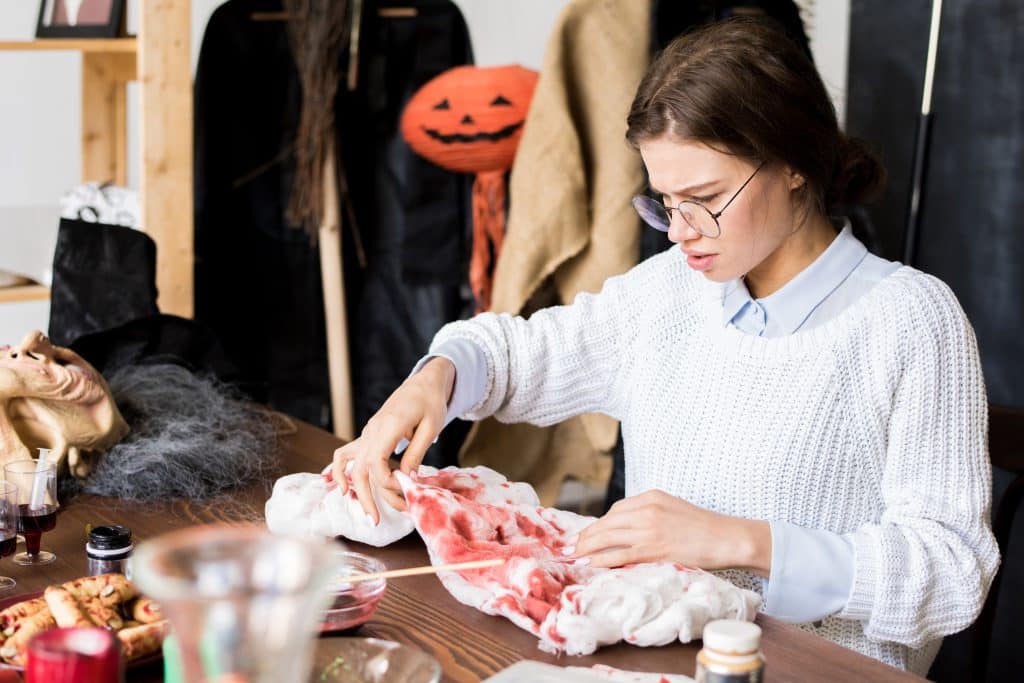
Red wine stains are perhaps the most common and dreaded of all types of stains. The good news is that red wine can often be removed quite easily when you take the proper steps to treat it quickly before it dries. Start by carefully blotting up as much of the stain with a clean cloth or sponge. Next, mix a solution of cold water and chlorine bleach directly onto the stained area and allow it to soak in for a few minutes.
In either case, once you’ve seen that the stain has vanished, test an inconspicuous area of your garment first so that you know there will not be any harm done to your clothes -or those pesky red wine stains! Finally, gently rub the area until all traces of the stain have been removed. Note that this method should only be used on white-colored articles of clothing as bleaching can damage darker colors; otherwise, simply use cold water instead.
Grease
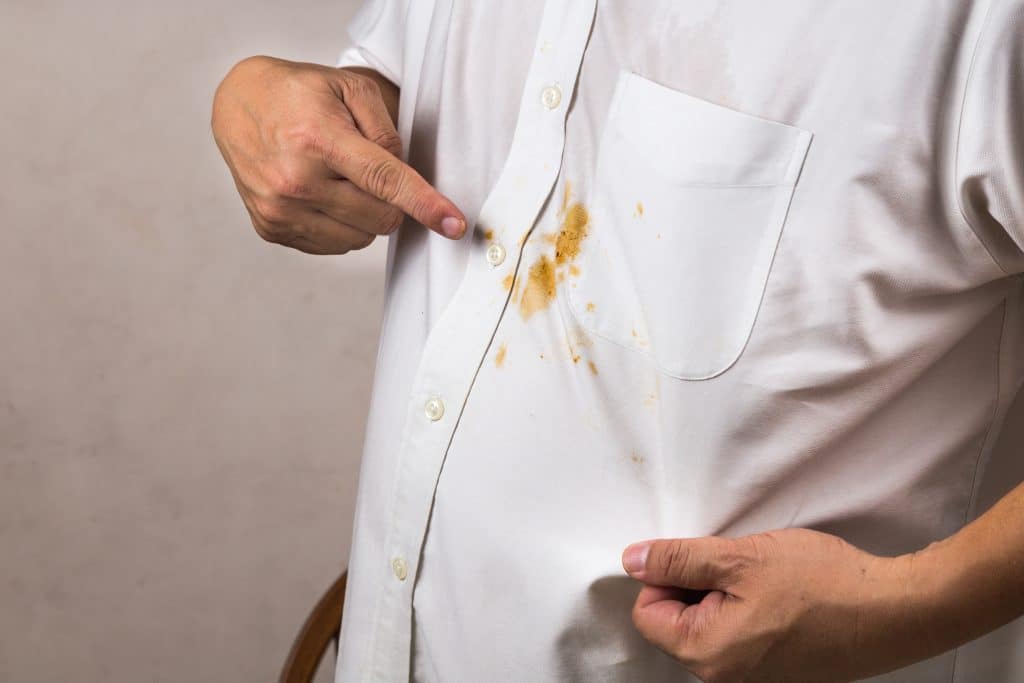
Grease is one of the most commonly encountered spots and stains, as it is present in various materials, from clothing to carpets. It can be challenging to remove from fabrics, especially when it has been on the material for a long time. The best way to get rid of grease stains is to treat them immediately with a good pre-treatment or cleaner and then launder them according to garment label instructions.
Alternatively, you can make a clump of chalk, wet it with water, and apply it directly onto the stain for about 20 minutes before laundering as normal. For oily grease stains on carpets, blot with paper towels or vacuum up excess oil, spray WD-40 on the stain topically and allow it to sit for an hour if possible. Lastly, blot lightly again with a towel and clean off any traces of the cleaning agent left behind by rinsing with white distilled vinegar.
Coffee

Coffee is a go-to morning pick-me-up that can easily become an unwanted sight later in the day. Stains caused by coffee can be tough to tackle, but with a few helpful tips, you can have clothing looking like new again. For fresh coffee stains, start by dabbing at them with a damp cloth. Pretreat the area using a stain remover or shavings of bar soap mixed with water and rub it between your fingers until it forms a solution.
From there, you can wash the item according to label instructions and air dry or machine dry it if safe to do so. If the coffee stain is set in, mix some baking soda with hydrogen peroxide and apply the paste directly onto the area. Let sit for fifteen minutes before thoroughly rinsing it off and laundering it as recommended. With proactive treatment and the right materials on hand, even pesky coffee stains won’t stand a chance!
Makeup
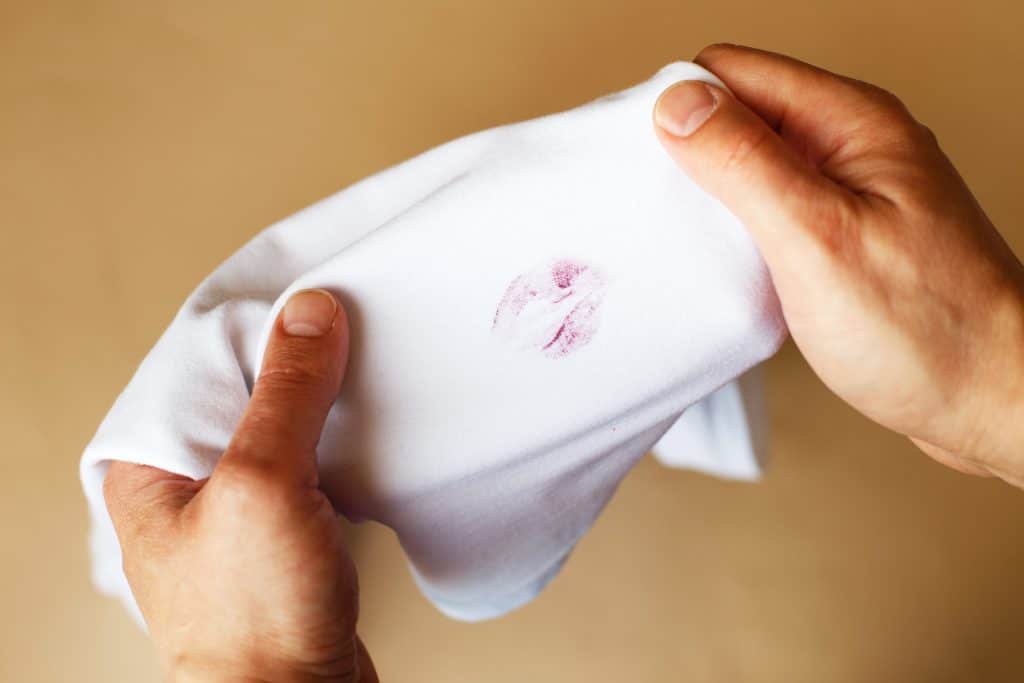
The most important rule when dealing with makeup stains is to treat them as quickly as possible. Foundations, concealers, and powders can create a real challenge; however, there are some solutions to tackling this type of stain. Using cold water, gently blot away the excess makeup before breaking out the laundry detergent.
Apply directly onto the affected area and leave it for five minutes – this will help break down oils that can be tough to remove from fabric. Once you’ve done this, use a brush to lather up the stain before rinsing with cold water afterward. If all else fails, try rubbing alcohol followed by more detergent and rinsing in cold water again – this should do the trick!
Mud
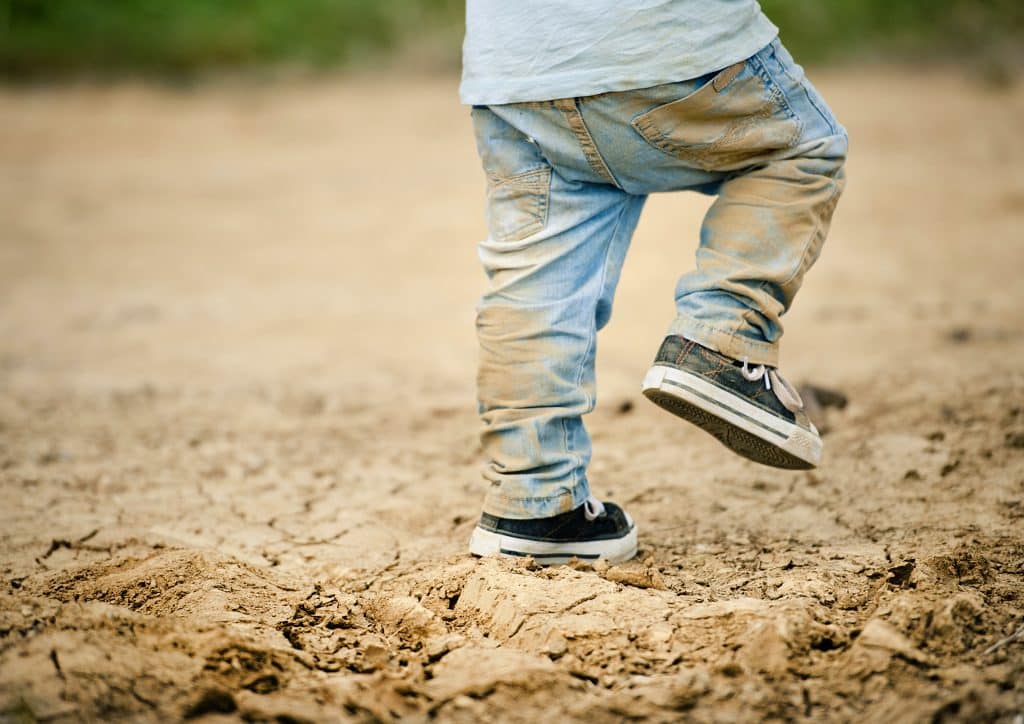
Mud is one of the most common stains you’re likely to encounter, especially if you have children or pets. Fortunately, you can use a few methods to quickly and effectively remove mud stains from fabrics and surfaces. If the mud is dry, it’s essential to first brush off as much of it as possible before attempting any cleaning strategy.
For lighter fabrics like cotton, hot water, and a mild detergent should be used for laundering – just ensure that hot water won’t damage the fabric. A safer option for tougher fabrics or furniture upholstery is removing any excess dirt using a soft-bristled brush, then treating the area with a mixture of equal parts white vinegar and warm water before rinsing thoroughly with cold water. If you act quickly and follow these steps, those pesky mud stains will easily disappear!
Ink
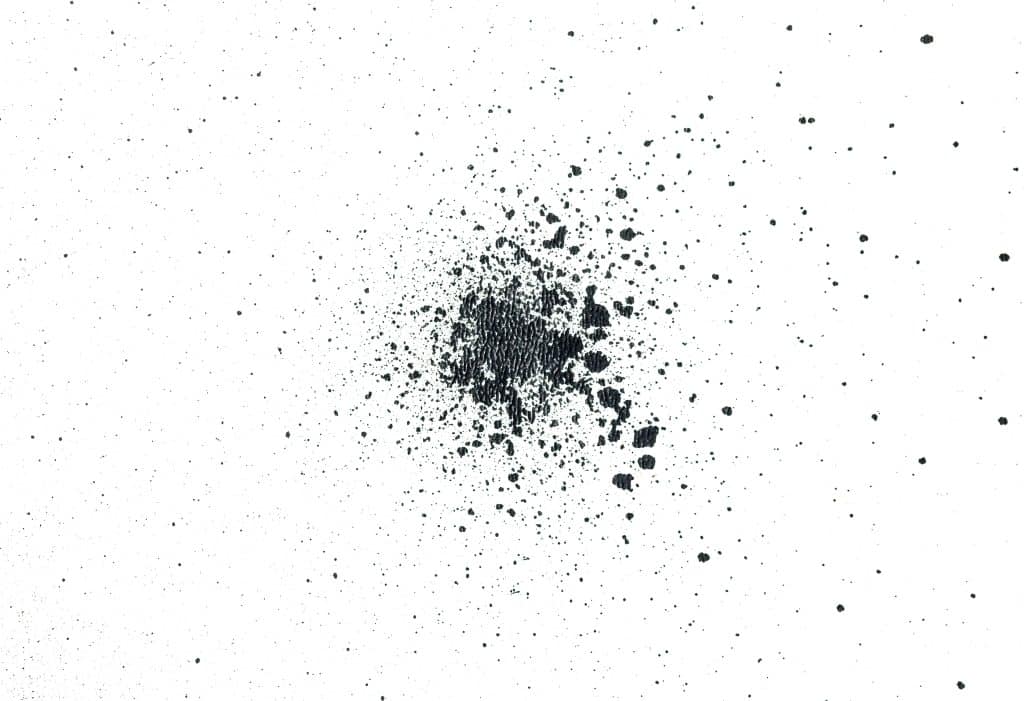
Most ink is water-soluble, so this should be your first step when attempting removal. Start by soaking the garment in warm water for up to an hour, and then gently rub soap into the stain with your fingers or a soft-bristled brush – this should help lift the pigment away from the fabric fibers.
If stubborn, you can try rubbing alcohol on soft fabrics like cotton, but do not use it on harder materials such as silk and wool. As a last resort, try soaking clothing stained with ink overnight in milk – milk contains enzymes that help break down and lift away the stain. No matter what method you choose, always take extra care to ensure the stain completely disappears before drying or ironing the garment.
Extra Tips For Handling Common Stains
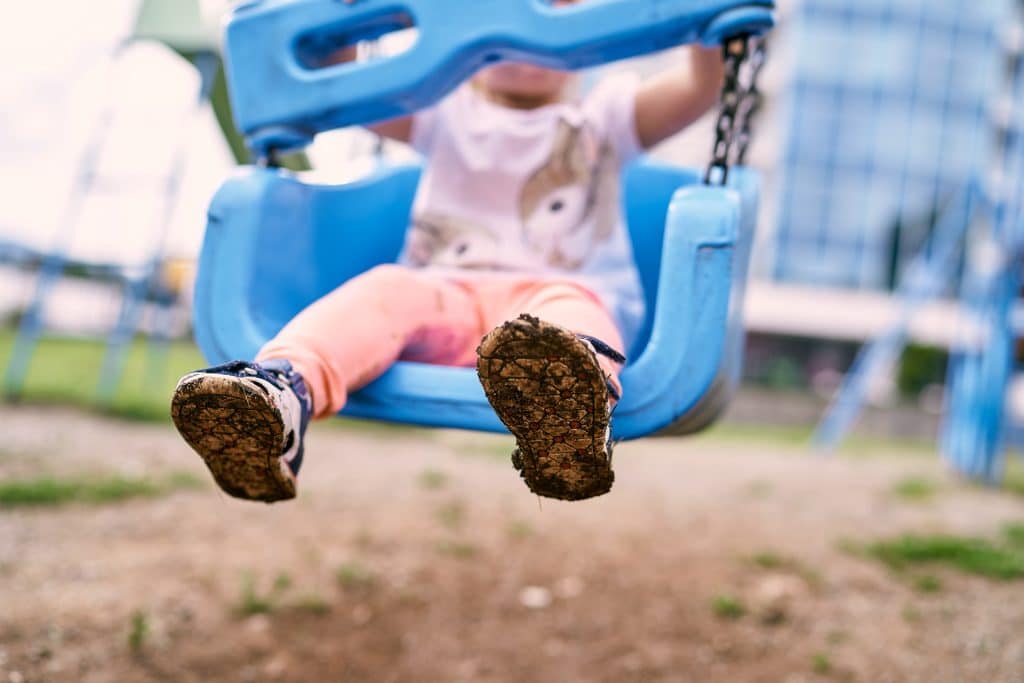
In addition, there are a few extra tips and tricks to keep in mind when dealing with common stains.
- Always act fast, as the longer, you wait, the more likely the stain will set into the fabric. The best way to handle this is to have a stain-removal kit at all times so you’re prepared for anything!
- If you don’t have a cleaner to hand and need something quick, try using your saliva – it’s pretty effective at removing stains and will help break down the pigments on contact.
- When in doubt, always read the labels of the specific materials carefully before treating any stains, as some materials may be more delicate and need to be handled with greater care.
- Also, you may find it helpful to seek the help of a professional dry cleaner, as they’ll have years of experience and know-how when it comes to all types of stain removal and fabric care.
Use These Tips To Treat The Different Kinds Of Common Stains
When dealing with common stains like ink, mud, or other types of dirt and grease, it is essential to act quickly to avoid letting the stain set into the fabric. There are several different cleaning strategies that you can use depending on the type of stain and the material that it is on. These may include soaking the stain in warm water, rubbing a mild detergent with your fingers or a soft-bristled brush, or soaking the garment overnight in milk. Whatever method you choose, it is essential to be careful and thorough when removing stains, as some materials may be more delicate and require special care.
Additionally, it is a good idea to always have a stain-removal kit on hand to be prepared for any type of stain or cleaning situation. With these tips and tricks, you can quickly and effectively tackle common stains and keep your clothes looking their best!


